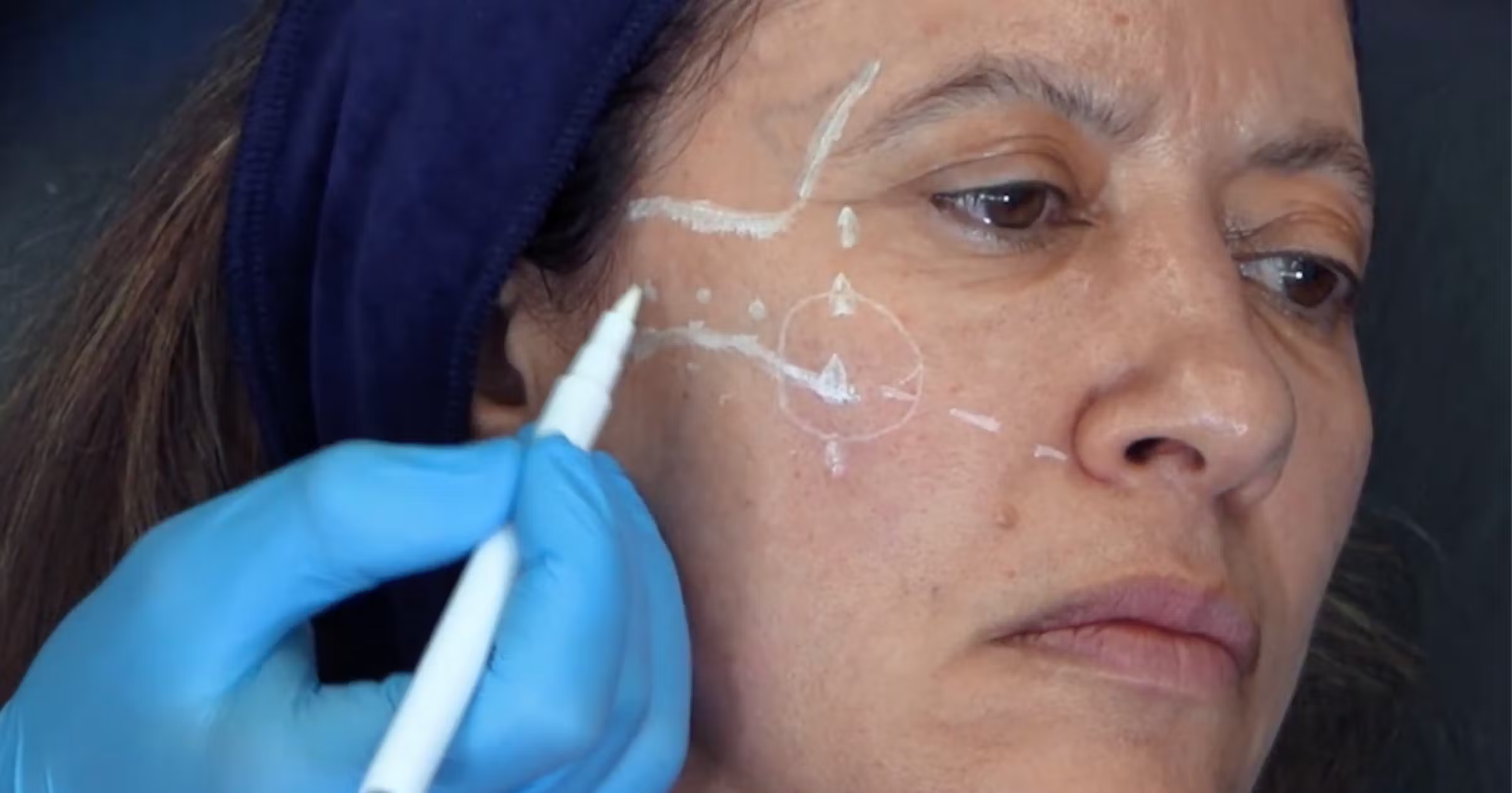
The conversation around facial fillers often orbits between the alluring promise of immediate, non-surgical rejuvenation and the very real, though infrequent, risks associated with injecting foreign substances into delicate facial anatomy. Achieving genuinely satisfying and safe results is not a matter of simply filling a wrinkle; it is an art that requires a medical license, blending a profound understanding of three-dimensional facial structure with rigorous aseptic technique. The distinction between a minor, temporary bruise and a catastrophic vascular event is frequently dictated by the practitioner’s training, the judicious selection of the product, and their constant, heightened awareness of the patient’s underlying vascular network. For any individual considering this type of aesthetic enhancement, the focus should not solely be on the final aesthetic outcome but primarily on the uncompromising safety protocols that minimize inherent risks.
A Profound Understanding of Three-Dimensional Facial Structure
The efficacy and safety of any dermal filler procedure begin and end with the practitioner’s comprehensive knowledge of facial anatomy. Unlike the two-dimensional mapping of a photograph, the face is a complex, multi-layered structure composed of skin, subcutaneous fat, muscle, fascia, and bone, all interwoven with a critical network of nerves and blood vessels. In the quest for volume or contour, the filler needle must navigate these layers without compromising vital structures.
…The distinction between a minor, temporary bruise and a catastrophic vascular event is frequently dictated by the practitioner’s training…
The most significant danger, vascular occlusion, occurs when filler material is inadvertently injected into an artery or vein, blocking blood flow to downstream tissues. Because of the interconnectedness of facial vasculature, a blockage in one area can lead to necrosis in a distant, seemingly unrelated site, such as the skin or, in the most severe cases, the retina. A responsible injector relies on deep anatomical knowledge—knowing exactly where the supraorbital, angular, and dorsal nasal arteries lie—to select the safest injection plane and technique, prioritizing a subtle, superficial placement over risky deep volume augmentation.
Vascular Occlusion: A Rare but Critical Emergency
While rare, a vascular occlusion represents the single most critical emergency in the realm of dermal filler injections. It is not an event that can be dismissed or simply observed; it demands immediate, decisive action. The early signs can be subtle: a sudden, severe pain, followed by blanching (whitening) or a mottled, net-like discoloration of the skin (livedo reticularis) that does not quickly resolve.
…a vascular occlusion represents the single most critical emergency in the realm of dermal filler injections.
Any practitioner who uses hyaluronic acid (HA) fillers—by far the most common and popular category—must have readily available and be highly proficient in the immediate use of hyaluronidase. This enzyme acts as a salvage agent, capable of dissolving the HA filler that is causing the blockage. The protocol for managing an occlusion is time-sensitive, requiring rapid, aggressive injection of hyaluronidase directly into and around the compromised vessel to restore blood flow within minutes, a process that can mean the difference between full recovery and permanent tissue loss. This necessity underscores why only medical professionals with emergency preparedness should perform these procedures.
The Judicious Selection of the Product
The marketplace is saturated with a bewildering variety of facial filler products, each formulated with different base materials, cross-linking structures, and viscoelastic properties. The judicious selection of the product is crucial to both safety and achieving a natural aesthetic outcome.
…The judicious selection of the product is crucial to both safety and achieving a natural aesthetic outcome.
Hyaluronic acid (HA) remains the gold standard because of its safety profile and reversibility, but even within the HA category, products vary significantly in thickness and cohesivity, making some suitable only for deep cheek bone contouring and others ideal for superficial lip definition. Using a thick, highly cross-linked filler in a superficial plane is a recipe for an unnatural, ‘lumpy’ look and increases the risk of palpable nodules. Similarly, non-HA fillers like Calcium Hydroxylapatite (CaHA) or Poly-L-lactic acid (PLLA), which work by stimulating collagen production, are not reversible with hyaluronidase and require a vastly different injection technique and an even greater margin of safety due to the finality of their placement.
Blunt Cannulas Versus Sharp Needles: A Technique Trade-Off
The delivery of the filler product itself involves a fundamental technique trade-off between the traditional sharp needle and the relatively newer blunt-tipped micro-cannula. Each instrument presents its own set of advantages and inherent risks that a skilled practitioner must weigh based on the target area and the patient’s anatomy.
…a technique trade-off between the traditional sharp needle and the relatively newer blunt-tipped micro-cannula.
The sharp needle allows for extreme precision and is ideal for superficial placement, such as addressing fine lines. However, its sharp tip easily penetrates vessels, increasing the risk of both bruising and vascular injury. The blunt-tipped cannula, conversely, is designed to be pushed through tissue planes; it typically pushes vessels aside rather than puncturing them, potentially reducing the risk of vascular occlusion and extensive bruising, particularly in broad areas like the cheeks. Yet, cannulas also offer less tactile feedback, requiring the injector to rely more heavily on their deep spatial awareness and experience to ensure the product is placed exactly where intended.
Managing Patient Expectations: The Reality of Swelling and Bruising
A significant component of a successful filler procedure is managing patient expectations regarding the immediate post-injection phase. Despite the best technique, swelling and bruising are not complications but expected, temporary side effects of injecting volume and trauma into the tissues.
…The reality of swelling and bruising.
Patients often expect to walk out of the clinic with a completely finished look, unaware that the initial result is transiently distorted by fluid accumulation and potential ecchymosis (bruising). Swelling typically peaks within 24 to 48 hours and gradually subsides over the following week, while bruising may take longer to resolve. Practitioners must clearly communicate the necessity of waiting the full two-week period for the filler to integrate, the swelling to disappear, and the true aesthetic result to stabilize before any definitive assessment or additional treatment is considered.
The Crucial Role of Injection Plane and Depth
The injection plane and depth are variables that cannot be generalized; they must be precisely determined for every unit of filler deposited. Placing a filler too superficially in a dynamic area will not only appear unnatural but can lead to a visible, bluish discoloration known as the Tyndall effect, particularly with thinner HA products.
…The crucial role of injection plane and depth.
Conversely, placing the filler too deep without adequate surrounding tissue support can fail to achieve the desired contouring. For restoring deep structural support (e.g., in the mid-face or along the jawline), filler is often placed directly onto the periosteum (the layer covering the bone). For subtle lip augmentation or fine lines, the placement must be intradermal or just subdermal. This multilayered approach, where different products are used at different depths to mimic the face’s natural structure, is the hallmark of sophisticated, natural-looking results, avoiding the common ‘over-filled’ appearance.
Recognizing and Treating Delayed Inflammatory Responses
While immediate adverse events like occlusion are prioritized, practitioners must also be vigilant about delayed inflammatory responses, which can manifest weeks or even months after the initial injection. These responses, though less common with modern HA fillers, typically present as firm, tender nodules or lumps at the injection site.
…Recognizing and treating delayed inflammatory responses.
These nodules can sometimes be harmless, representing a slight over-collection of integrated filler, but they may also be a sign of a delayed hypersensitivity reaction or the formation of a biofilm (a layer of bacteria protecting themselves from the immune system). The management of such events requires careful clinical differentiation. Small nodules may resolve with massage, while persistent, inflammatory nodules often require a targeted, often multi-week protocol involving a combination of systemic antibiotics and precise, low-dose injections of corticosteroids or hyaluronidase, demonstrating that the practitioner’s responsibility extends long past the initial procedure time.
Infection Prevention: The Aseptic Mandate
A non-negotiable aspect of injection safety is adherence to the aseptic mandate—the rigorous maintenance of a sterile environment to prevent infection. The introduction of any foreign substance, however minimally invasive, breaches the skin barrier and creates a pathway for bacterial entry.
…The aseptic mandate.
Before every injection, the skin must be thoroughly cleansed with an appropriate antiseptic solution (e.g., chlorhexidine or alcohol). The instruments, including the syringe and needle/cannula, must be sterile and single-use. Furthermore, the practitioner must always use a no-touch technique, avoiding any contact between the exposed needle or filler tip and non-sterile surfaces. While a surface-level infection can usually be treated with antibiotics, a deep-seated infection—or one involving a biofilm—can necessitate prolonged and complicated treatment, emphasizing that cutting corners on sanitation is a direct compromise of patient health.
The Ethical Responsibility of Deferral
The practice of aesthetic medicine involves an ethical responsibility of deferral—knowing when to say ‘no’ to a patient who is requesting an unsafe, inappropriate, or excessive amount of filler. A skilled and ethical practitioner understands that their primary obligation is to patient safety and a natural, balanced aesthetic, not simply fulfilling every request.
…The ethical responsibility of deferral.
This often involves recognizing and addressing signs of Body Dysmorphic Disorder (BDD), where a patient is obsessively focused on a perceived minor flaw. Continuing to inject an individual with BDD is not only ineffective but potentially harmful. Furthermore, the practitioner must defer treatment if the patient is currently ill, has an active infection near the site, or has unrealistic expectations that no amount of filler can reasonably achieve. Maintaining professional integrity in these difficult conversations is fundamental to responsible practice.
The Importance of High-Resolution Imagery and Documentation
Detailed high-resolution imagery and documentation are not merely administrative tasks; they are critical components of both safety and outcome assessment. A standardized photographic record provides an objective baseline for evaluation and comparison.
…The Importance of High-Resolution Imagery and Documentation.
It is nearly impossible to accurately track subtle changes in volume, contour, and symmetry—especially in the face of post-procedure swelling—without a reliable pre-treatment photograph taken under consistent lighting and positioning. In the event of an adverse reaction, these images become essential medicolegal evidence and provide the best available information for accurately diagnosing the extent and location of the problem. A practitioner who skips this step compromises the ability to monitor the long-term integration of the filler and effectively manage any subsequent complications, thereby undermining the scientific rigor of the entire procedure.
